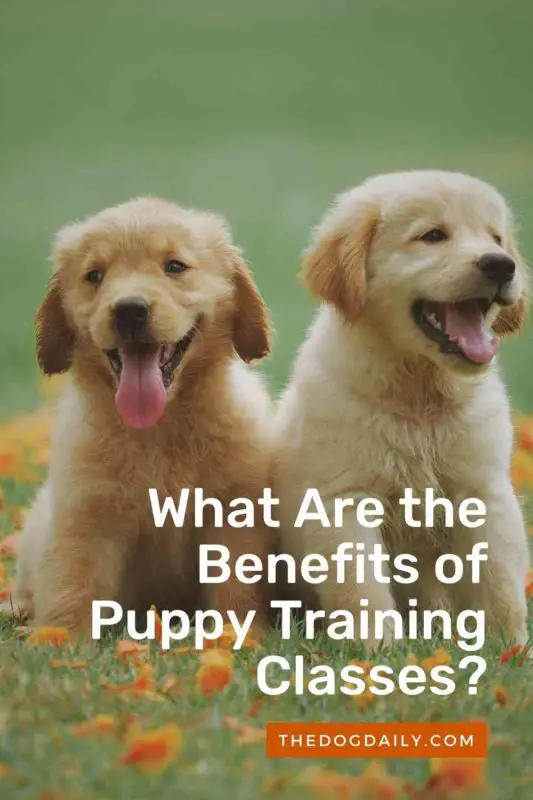Why Is Training a Puppy Important?
The dozen or so young dogs in Dawn Sylvia-Stasiewicz‘s class are about to spend the next hour lavished with praise, treats, and attention. For the puppies, all irresistibly cute to owners flush with a new love; these regular hour-long puppy training classes over the next six weeks will seem like fun and games. Owners will play off-leash with their puppy pals, while dogs learn basic cues from their owners and interact with strangers. But this puppy training class, which Sylvia-Stasiewicz laughingly calls “puppy preschool,”‘ might be critical for the future happiness of both dogs and owners. Training your dog at an early age leads to happier relationships. In many cases, it decreases the chances that your dog may have to be removed from your home because of behavioral issues.
“It’s preparing your dog for life,” says Sylvia-Stasiewicz, owner of northern Virginia-based Merit Puppy Training.
“We want to prevent possible problems, such as food or resource guarding, jumping, puppy mouthing, or nipping. We want to take the puppies as a clean slate at a young age.”
What Is the Best Age For Puppy Training Classes?
Instruction and interaction during the first six to eight months of doggie development ensure that a puppy absorbs information from its social and physical environment like a sponge, says Jennie Jamtgaard, an animal behavior instructor at the Colorado State University College of Veterinary Medicine.
“Ideally, a puppy class is going to get them started on the road to socialization,” says Jamtgaard. A good puppy training class, like classes for young children, is tailored to suit its participants with positive reinforcement, short segments, and social time.
How Do They Train Puppies At Puppy Training Classes?
“Training by positive reinforcement means you’re using something the dog wants to get a win-win situation,” says dog trainer Angelica Steinker, owner of Courteous Canine in Lutz, Fla. “Things should be taught in a way that maximizes fun and minimizes stress.” Puppy classes shouldn’t involve shouting, leash corrections, and the like, say the trainers.
Because your puppy undoubtedly has a short attention span, it’s important to keep activities and learning exercises brief in puppy class. While the temptation might be to practice a lesson over and over, it doesn’t work well for young dogs, says Jamtgaard.
While practicing a lesson over and over may not benefit younger pups, playing with its peers will. The typical puppy class will provide time for your puppy to interact with the other dogs off-leash. Your puppy should also get the chance to interact with other people. Many puppy classes allow children to attend when accompanied by adults. That’s an opportunity for your puppy to learn to interact with children appropriately.
For more information about puppy education and links to classes held worldwide, visit the puppy class website. Be sure to evaluate a school before you enroll your dog. Also, the American Kennel Club can connect owners to training clubs throughout the U.S. that provide education for canines of all ages. A full list of training clubs can be found on the AKC website.
What Is the First Thing You Should Train Your Puppy To Do?
A puppy class provides a controlled opportunity for socialization that you really can’t replicate elsewhere, but there are also things you can try with your dog at home:
-
Offer Real-Life Rewards
Teach your puppy to work for anything and everything he’s going to get, Sylvia-Stasiewicz says. And how do you teach your impossibly wiggly ball of energy how to sit? Simple. Raise a piece of food, out of sight in your closed hand, above its nose. Then watch the laws of dog physics at work. The head goes up, and the bottom goes down.
-
Hand-Feed
Take the time to feed your puppy by hand rather than placing a bowl in front of its nose, and you establish control that will help with future training.
-
Make Trades
Teach your puppy to fetch by trading nutritious treats for the items fetched. It makes it less
likely your puppy will disappear under the bed with one of your favorite slippers.
-
Play Smart
Make education fun for your puppy. Hide and seek teaches your puppy a lot (while using up a great deal of its energy), particularly if you train them to seek you out.
Remember that learning opportunities for your dog begin immediately from the beginning. “They’re always in class,” says Sylvia-Stasiewicz. “You’ve got to start the day the dog comes home. “Your puppy is only going to be a puppy a short while. The socializing window is going to close before you know it.”
Article written by Author: Kim Boatman

